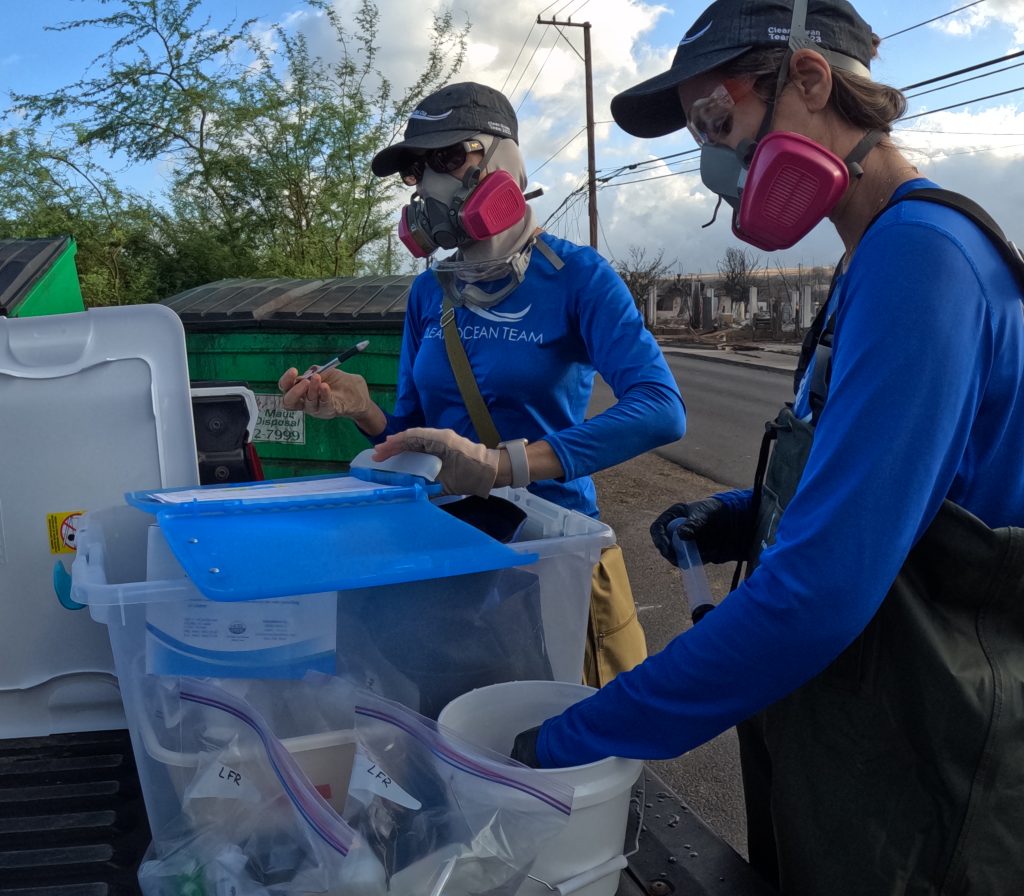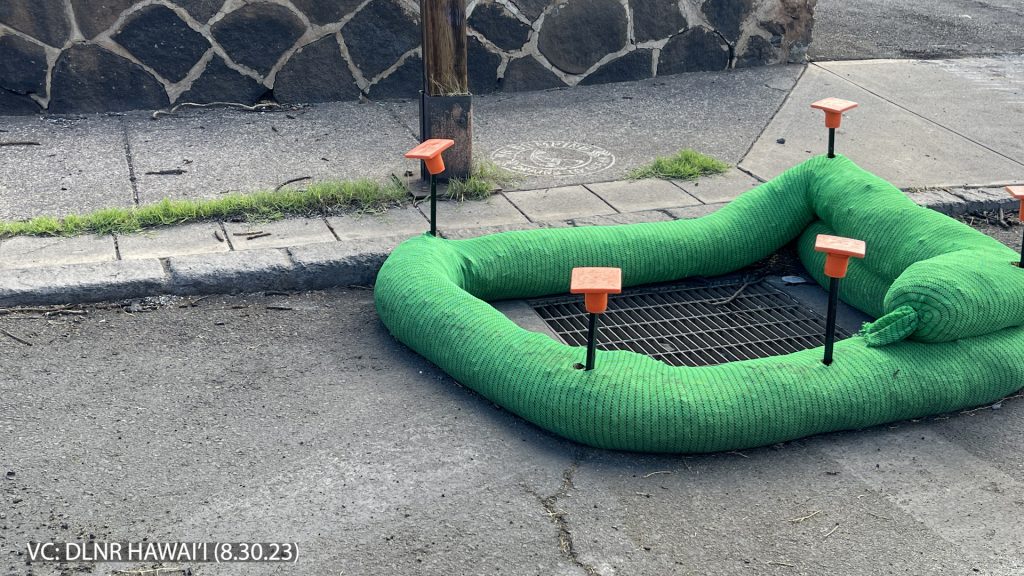Ocean water testing begins off Lahaina
Preliminary water testing in the nearshore waters off Lahaina is showing that physical parameters, like temperature, PH, salinity, and dissolved oxygen, are currently in normal ranges.
Russell Sparks, an aquatic biologist with the DLNR Division of Aquatic Resources, said, “We have ongoing concerns that pollutants from the fire will make their way into the ocean at some of the drainage outfalls or from storm drains. For years we’ve done regular monitoring, but now we’re including testing from the fire zone. We’ll be sending samples off to researchers who will be looking more in detail at some of the heavy metals and other volatile chemicals that are associated with fires.”
Sparks teamed up on Wednesday with Tova Callender of the West Maui Ridge-to-Reef Initiative, and Liz Yannell of Hui O Ka Wai Ola to take ocean water samples at numerous locations along the fire impact area.
That research will look at volatile organic compounds and semi-volatile organic compounds. Yannell explained, “We have more of a chance of finding semi-volatile organic compounds in the water because these compounds don’t disperse as quickly. Big things that end up in the ocean can leach chemicals into the marine environment.”
For 10 years, Callender, her organization, and other conservation partners have been working to reduce erosion and sedimentation from the West Maui Mountains into the ocean, focusing on a drainage one watershed north of Lahaina, out of the fire area.
“Certainly, this gives us an opportunity to do a re-start on all kinds of things,” Callender told DLNR officials. “This includes the agriculture areas above Lahaina and other communities, as well as improving best practices for storm water management from the ridges to the reefs of West Maui.”
Sparks said, “Due to the old infrastructure of Lahaina, storm water does not flow into settling basins or modern infrastructure, so it flows as quickly as possible into the ocean. So, that’s a huge concern with the amount of potentially toxic substances on the land now.”


















